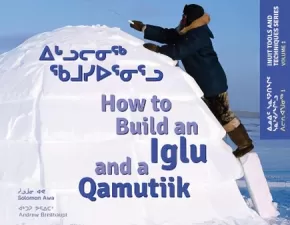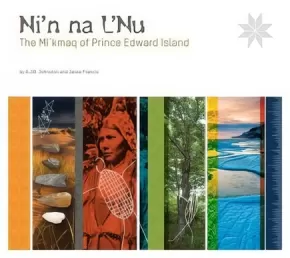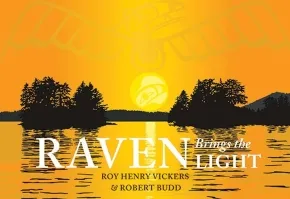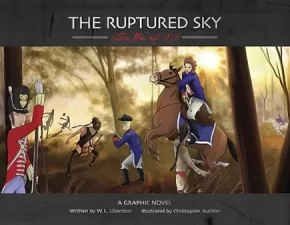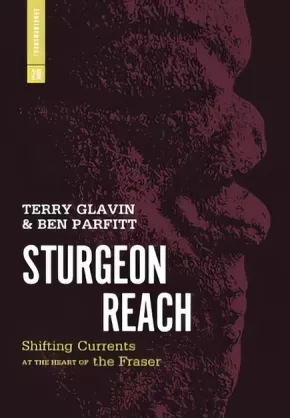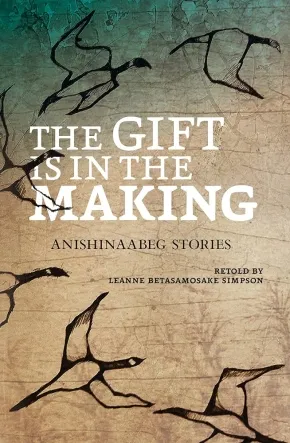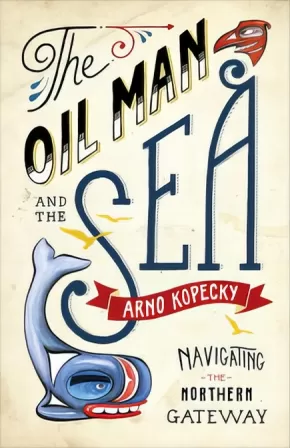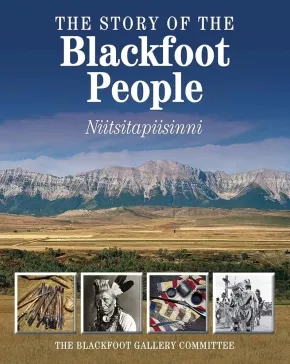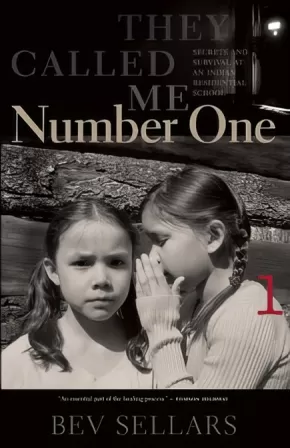
Non-Fiction
586
-
600
of
748 Results;
Sort By
Go To
of 50
Healing Histories: Stories from Canada's Indian Hospitals
$32.99
Format:
Paperback
Text Content Territories:
Indigenous Canadian;
ISBN / Barcode: 9780888646507
Synopsis:
Synopsis:
Healing Histories is the first detailed collection of Aboriginal perspectives on the history of tuberculosis in Canada’s indigenous communities and on the federal government’s Indian Health Services. Featuring oral accounts from patients, families, and workers who experienced Canada’s Indian Hospital system, it presents a fresh perspective on health care history that includes the diverse voices and insights of the many people affected by tuberculosis and its treatment in the mid-twentieth century. This intercultural history models new methodologies and ethics for researching and writing about indigenous Canada based on indigenous understandings of “story” and its critical role in Aboriginal historicity, while moving beyond routine colonial interpretations of victimization, oppression, and cultural destruction. Written for both academic and popular reading audiences, Healing Histories is essential reading for those interested in Canadian Aboriginal history, history of medicine and nursing, and oral history.
How to Build an Iglu and a Qamutiik: Inuit Tools and Techniques, Volume One
$12.95
Artists:
Format:
Paperback
Text Content Territories:
Indigenous Canadian; Inuit;
ISBN / Barcode: 9781927095317
Synopsis:
Synopsis:
The iglu, a traditional winter shelter built in the Arctic for centuries, is a vital part of Inuit culture. The qamutiik, a traditional sled used for hunting, is an essential tool whose versatility and dependability have allowed it to endure over time.
In How to Build an Iglu & a Qamutiik, Solomon Awa provides thorough how-to instructions on building iglus and qamutiiks, along with general background information on their construction and importance to survival. Complete with detailed, clear illustrations, this valuable resource will teach readers to build these structures that are so central to Inuit culture and tradition.
Educator Information
Delivered in a dual-language format of English and Ikutitut.
Additional Information
32 pages | 9.00" x 7.00" | b&w illustrations, colour photographs
maskisina: A Guide to Northern-Style Métis Moccasins
$24.95
Format:
Paperback
Text Content Territories:
Indigenous Canadian; Métis;
ISBN / Barcode: 9781926795119
Synopsis:
Synopsis:
maskisina: A Guide to Northern-Style Métis Moccasins is a follow-up to the highly successful wapikwaniy: A Beginner’s Guide to Métis Floral Beadwork. Much like wapikwaniy, maskisina guides readers, step-by-step, on how to create their very own moccasins. It contains detailed photographs along with each step. It also includes a historic overview of moccasins by Sherry Farrell Racette. Patterns for cutting the correct sizes for the soles and vamps are included in the book.
Educator Information
Grade Level: Secondary/Post Secondary/Adult
Modern Native Feasts
$26.95
Format:
Paperback
Text Content Territories:
Indigenous;
Reading Level: N/A
ISBN / Barcode: 9781551525075
Synopsis:
Synopsis:
Contemporary, imaginative interpretations of First Nations cuisine, including lighter, healthier, and more nutritious versions of traditional recipes.
Native American cuisine comes of age in this elegant, contemporary collection that reinterprets and updates traditional Native recipes with modern, healthy twists. Andrew George Jr. was head chef for Aboriginal foods at the 2010 Winter Olympics in Vancouver; his imaginative menus reflect the diverse new culinary landscape while being mindful of an ages-old reverence for the land and sea, reflecting the growing interest in a cuisine that is rapidly moving into the mainstream to become the "next big thing" among food trends. Andrew also works actively at making Native foods healthier and more nutritious; his recipes are lighter, less caloric, and include Asian touches, such as bison ribs with Thai spices, and a sushi roll with various cooked fish wrapped in nori. Other dishes include venison barley soup, wild berry crumble, sea asparagus salad, and buffalo tourtiere.
Full of healthy, delicious, and thoroughly North American fare, Modern Native Feasts is the first Aboriginal foods cookbook to go beyond the traditional and take a step into the twenty-first century.
Reviews
"Modern Native Feasts fuses traditional recipe preparations like brining, smoking, and curing with using fresh, local, seasonal ingredients readily available in many supermarkets. Meals reflect a diverse new culinary landscape built on an age-old reverence for the land and sea." — Gastrotraveling.com, December 2013
"The resulting recipes are unfussy yet often elegant, perfect for either a potlatch or a potluck ... George keeps his intros blessedly short, while still telling the background of each dish; the cookbook is beautifully designed, with a rustic look that's carried throughout." — The Oregonian, November 2013
"Whatever you have in mind when you conjure up the image created by the title Modern Native Feasts, you won't be imagining anything quite like this. Chef George has taken the best of his indigenous Canadian culture and traditions and fused it with his modern training, plus a generous helping of very real talent and created a cuisine that, while it may be distinctly his, could feasibly represent a beautiful -- and delicious -- future ... This is sophisticated contemporary food perfectly informed by the chef's heritage and own sensibilities." ―January Magazine
Additional Information
192 pages | 8.00" x 9.00"
Ni'n na L'nu The Mi'kmaq of Prince Edward Island (1 in stock, in reprint)
$19.95
Format:
Paperback
Text Content Territories:
Indigenous Canadian; First Nations; Mi'kmaq;
ISBN / Barcode: 9781894838931
Synopsis:
Synopsis:
This lavishly-illustrated book tells a story through words and images that has never before been told, not in any single book. The focus is entirely on the Mi'kmaq of the Island, an island which for thousands of years has been known to the Mi'kmaq and their ancestors as Epekwitk. That name means "cradle on the sea" and no more poetic description of PEI has ever been penned. The story of the PEI Mi'kmaq is one of adaptation and perseverance across countless generations in the face of pervasive change. Today's environment is far from what it was millennia ago. So too, the economy, society, lifestyle, language and religion of the people has witnessed some dramatic shifts. Nonetheless, despite all the changes, today's Mi'kmaq feel deeply connected to the Island in its entirety and to their ancestors and the values they still share. This book tells those many stories, and communicates much more. While the book is a stand-alone publication, it is also a companion to a travelling exhibition of the same name.
- Winner of APMA Best Atlantic-Published Book Award
- Winner of PEI Book Award for Non-fiction
Raven Brings the Light
$24.95
Format:
Hardcover
Text Content Territories:
Indigenous Canadian; First Nations; Tsimshian (Ts'msysen); Haida;
ISBN / Barcode: 9781550175936
Synopsis:
Synopsis:
In a time when darkness covered the land, a boy named Weget is born who is destined to bring the light. With the gift of a raven's skin that allows him to fly as well as transform, Weget turns into a bird and journeys from Haida Gwaii into the sky. There he finds the Chief of the Heavens who keeps the light in a box. By transforming himself into a pine needle, clever Weget tricks the Chief and escapes with the daylight back down to Earth.
Vividly portrayed through the art of Roy Henry Vickers, Weget's story has been passed down for generations. The tale has been traced back at least 3,000 years by archeologists who have found images of Weget's journey in petroglyphs on the Nass and Skeena rivers. This version of the story originates from one told to the author by Chester Bolton, Chief of the Ravens, from the village of Kitkatla around 1975.
Reviews
"One of the great problems we face today is our sense of isolation and separateness from the rest of the world. Roy Henry Vickers' art constantly reminds us of the interconnectedness of everything in the world. With this magnificent book, he shows us our interdependence physically and spiritually. It is a message we have to hear." — David Suzuki, environmental activist, broadcaster, author
Educator & Series Information
This book is part of the Northwest Coast Legends Series.
Other books in this series include:
Raven Brings the Light
Cloudwalker
Orca Chief
Peace Dancer
Recommended for ages 3 to 6.
Additional Information
40 pages | 12.00" x 8.25"
Real Justice: Convicted for Being Mi'kmaq: The Story of Donald Marshall Jr.
$12.95
Format:
Paperback
Text Content Territories:
Indigenous Canadian; First Nations; Mi'kmaq;
ISBN / Barcode: 9781459404397
Synopsis:
Synopsis:
When a black teen was murdered in a Sydney, Cape Breton park late one night, his young companion, Donald Marshall Jr., became a prime suspect. Sydney police coached two teens to testify against Donald which helped convict him of a murder he did not commit. He spent 11 years in prison until he finally got a lucky break. Not only was he eventually acquitted of the crime, but a royal commission inquiry into his wrongful conviction found that a non-aboriginal youth would not have been convicted in the first place. Donald became a First Nations activist and later won a landmark court case in favour of native fishing rights. He was often referred to as the "reluctant hero" of the Mi'kmaq community.
Reviews
"Bill Swan presents a straightforward, compelling narrative, easily followed, that will astound today's teenagers." — Joan Marshall, Resource Links
"the important subject matter, meticulous research, and ultimately balanced portrait of the flawed man Marshall was makes this an engrossing and enlightening read for curious teens."— CM: Canadian Review of Materials
"Much of this disturbing but well-researched book is impressively drawn directly from court documents and is part of the valuable Real Justice series, which features wrongfully accused Canadian youth and their fight for freedom."— Booklist Online
Educator Information
Interest age: From 13 To 17
Fry Reading Level [grade]: 5.0
Lexile Reading Level: HL770L
Additional Information
184 pages | 5.50" x 8.50"
Ruptured Sky: The War of 1812
$30.00
Artists:
Format:
Paperback
Text Content Territories:
Indigenous American; Indigenous Canadian;
ISBN / Barcode: 9780132804738
Synopsis:
Synopsis:
The Ruptured Sky explores the War of 1812 from First Nations perspectives. Without their involvement, the borders of Canada and America might have been vastly different.
Without their First Nations allies, British troops and Canadian militia would not have win key battles and the U.S./Canada border might not exist. Canada might not have become an independent nation. First Nations peoples remained conflicted about whom to support since longstanding allegiances existed with both the British and Americans. This became a divisive issue. Individuals such as Tecumseh, John Norton, Joseph Brant, and others played major roles in the war's outcome. First Nations peoples fought with outstanding bravery, great ferocity, and remarkable skill. This book tells a little-known story of their remarkable contributions to Canadian victories in the War of 1812--and of how they were treated at the war's end.
Additional Information
62 pages
Sturgeon Reach: Shifting Currents At The Heart of the Fraser
$19.00
Format:
Paperback
Text Content Territories:
Indigenous Canadian; First Nations; Salish; Coast Salish; Sto:lo;
ISBN / Barcode: 9781554200603
Synopsis:
Synopsis:
Sturgeon Reach is the name some have given to a stretch of the Fraser River between Hope and Pitt Meadows, where its flow slows, and it deposits the gravel it's been carrying from the province's interior. Its story is one of rocks and stones, from its geological origins, from the mythic beginnings of human settlement, and from the arrival of Simon Fraser through to the onslaught of dykes and roads and bridges and foundations that today threaten the river's essential nature.
Sturgeon Reach hosts an incredible array of life, from giant black cottonwoods to a creature that dates from the age of dinosaurs –– the remarkable white sturgeon. This stretch of river is the spawning ground for major salmon runs. And for millennia, it has also been the home of the Sto:lo Indians.
How can we now live well along a river that has a ceaseless desire to overflow its banks and set its own course? How can we allow the life that the river's character fosters to persist in the face of overwhelming development? In the 20th book in the Transmontanus series, Terry Glavin and Ben Parfitt explore Sturgeon Reach — its geography, its history, its critical role in the coastal ecosystem, and the compelling story it tells about competing human needs.
The Gift is in the Making: Anishinaabeg Stories
$22.00
Format:
Paperback
Text Content Territories:
Indigenous American; Native American; Anishinaabeg;
ISBN / Barcode: 9781553793762
Synopsis:
Synopsis:
The Gift Is in the Making retells previously published Anishinaabeg stories, bringing to life Anishinaabeg values and teachings to a new generation. Readers are immersed in a world where all genders are respected, the tiniest being has influence in the world, and unconditional love binds families and communities to each other and to their homeland. Sprinkled with gentle humour and the Anishinaabe language, this collection of stories speaks to children and adults alike, and reminds us of the timelessness of stories that touch the heart.
Educator & Series Information
This book is part of The Debwe Series.
Recommended for grades 5 to 9.
Additional Information
99 pages | 5.50" x 8.50"
The Oil Man and the Sea: Navigating the Northern Gateway
$26.95
Format:
Paperback
Text Content Territories:
Indigenous Canadian; First Nations;
ISBN / Barcode: 9781771001076
Synopsis:
Synopsis:
Short-listed for the Governor General's Literary Award and the Banff Mountain Book Award and winner of the Edna Staebler Award for Creative Non-Fiction.
With Enbridge Inc.'s Northern Gateway proposal nearing approval, supertankers loaded with two million barrels of bitumen each may soon join herring, humpbacks and salmon on their annual migration through the tumultuous waters off British Columbia's Central Coast -- a place no oil tanker has been before. The contentious project has aroused intense opposition, pitting local First Nations, a majority of British Columbia's urban population, and environmental groups across the country against an international consortium led by Enbridge and backed by a federal government determined to make Canada an "energy superpower."
Arno Kopecky sails into the controversy aboard a forty-one-foot cutter for a closer look at a legendary region with a knife at its throat. Without any prior sailing experience, Kopecky and his sailing companion -- photographer Ilja Herb -- struggle to keep afloat as they make their way through a volatile labyrinth of fjords, inlets, and evergreen islands known as the Great Bear Rainforest. This amphibious ecosystem is among the last great wildernesses on earth, housing a quarter of the world's temperate rainforest and a thriving ocean environment that together host forty per cent more biomass per hectare than the Amazon. But as Kopecky soon discovers, the politics of Big Oil and First Nations can be every bit as treacherous to navigate as the shifting currents and hidden reefs for which the Northern Gateway tanker route is known.
In this rich evocation of ecology, culture, and history, Kopecky meditates on the line between impartial reportage and environmental activism, ultimately arguing that there are some places oil tankers should never go.
Caution: Includes some profanity and use of marijuana.
The Story of the Blackfoot People: Nitsitapiisinni
$19.95
Format:
Paperback
Text Content Territories:
Indigenous American; Native American; Blackfoot Confederacy (Siksikaitsitapi); Indigenous Canadian; First Nations; Blackfoot Confederacy (Siksikaitsitapi);
ISBN / Barcode: 9781770851818
Synopsis:
Synopsis:
For the first time in history, the Blackfoot people share their culture, beliefs and traditions with the rest of the world.
In an innovative partnership with the Glenbow Museum in Calgary, Alberta, a team of elders and spiritual leaders from the Blackfoot community agreed to share their history, traditions and artifacts in an effort to document their lives. The Story of the Blackfoot People: Nitsitapiisinni is the first piece of permanent documentation written by the leaders of the Blackfoot community about their lives both past and present.
This book chronicles all the important aspects of Blackfoot life and history. The book begins by exploring the fundamental belief systems of the Blackfoot including their traditional stories, sacred places, dances and ceremonies. Strong relationships are recognized by the Blackfoot as one of the most important keys to survival and the roles of men, women, children and elders, and their sacred connection to nature and their environment, are examined in detail. Less harmonious relationships are also candidly explored including relations between the Blackfoot people and the governments of the United States and Canada. In its moving conclusion, the Blackfoot community discusses the importance of uniting ancient traditions with modern challenges in order for their legacy to survive.
Revealing the enduring strength and fortitude of spirit of the Blackfoot people, this book will have meaning for both native and non-native readers alike.
Authenticity Note: This work is labelled as containing Authentic Indigenous Text because of the contributions from elders and other Indigenous peoples.
The Wild Medicine Solution (4 in Stock) - ON SALE!
$20.00 $27.50
Format:
Paperback
ISBN / Barcode: 9781620550847
Synopsis:
Synopsis:
Restoring the use of wild plants in daily life for vibrant physical, mental, and spiritual health
• Explains how 3 classes of wild plants--aromatics, bitters, and tonics--are uniquely adapted to work with our physiology because we coevolved with them
• Provides simple recipes to easily integrate these plants into meals as well as formulas for teas, spirits, and tinctures
• Offers practical examples of plants in each of the 3 classes, from aromatic peppermint to bitter dandelion to tonic chocolate
As people moved into cities and suburbs and embraced modern medicine and industrialized food, they lost their connection to nature, in particular to the plants with which humanity coevolved. These plants are essential components of our physiologies--tangible reminders of cross-kingdom signaling--and key not only to vibrant physical health and prevention of illness but also to soothing and awakening the troubled spirit.
Blending traditional herbal medicine with history, mythology, clinical practice, and recent findings in physiology and biochemistry, herbalist Guido Masé explores the three classes of plants necessary for the healthy functioning of our bodies and minds--aromatics, bitters, and tonics. He explains how bitter plants ignite digestion, balance blood sugar, buffer toxicity, and improve metabolism; how tonic plants normalize the functions of our cells and nourish the immune system; and how aromatic plants relax tense organs, nerves, and muscles and stimulate sluggish systems, whether physical, mental, emotional, or spiritual. He reveals how wild plants regulate our heart variability rate and adjust the way DNA is read by our cells, controlling the self-destructive tendencies that lead to chronic inflammation or cancer.
Offering examples of ancient and modern uses of wild plants in each of the 3 classes--from aromatic peppermint to bitter dandelion to tonic chocolate--Masé provides easy recipes to integrate them into meals as seasonings and as central ingredients in soups, stocks, salads, and grain dishes as well as including formulas for teas, spirits, and tinctures. Providing a framework for safe and effective use as well as new insights to enrich the practice of advanced herbalists, he shows how healing “wild plant deficiency syndrome”--that is, adding wild plants back into our diets--is vital not only to our health but also to our spiritual development.
They Called Me Number One: Secrets and Survival at an Indian Residential School
$19.95
Format:
Paperback
Text Content Territories:
Indigenous Canadian; First Nations; Salish; Interior Salish; Secwepemc (Shuswap); Xat’sull (Soda Creek);
ISBN / Barcode: 9780889227415
Synopsis:
Synopsis:
Like thousands of Aboriginal children in Canada, and elsewhere in the colonized world, Xatsu'll chief Bev Sellars spent part of her childhood as a student in a church-run residential school.
These institutions endeavored to "civilize" Native children through Christian teachings; forced separation from family, language, and culture; and strict discipline. Perhaps the most symbolically potent strategy used to alienate residential school children was addressing them by assigned numbers only-not by the names with which they knew and understood themselves.
In this frank and poignant memoir of her years at St. Joseph's Mission, Sellars breaks her silence about the residential school's lasting effects on her and her family-from substance abuse to suicide attempts-and eloquently articulates her own path to healing. 'Number One' comes at a time of recognition-by governments and society at large-that only through knowing the truth about these past injustices can we begin to redress them.
Awards
- 2014 Burt Award Third Place Winner
Educator Information
Grades 10-12 BC English First Peoples resource for the unit Place-Conscious Learning - Exploring Text through Local Landscape.
Additional Information
256 pages | 5.67" x 8.20"
Tulugaq: An Oral History of Ravens
$24.95
Format:
Paperback
Text Content Territories:
Indigenous Canadian; Inuit;
ISBN / Barcode: 9781927095157
Synopsis:
Synopsis:
Ravens appear in mythology and folklore the world over. Few other birds have inspired such simultaneous dread and fascination, or given rise to so many forms of artistic expression. But in the Arctic, ravens are not only mythological and artistic figures, but also brilliant scavengers, fascinating communicators, and daily nuisances.
The result of ten years of research and interviews, Tulugaq examines the raven's place in Canadian Arctic society and reveals a bird that is at times loved, maligned, dreaded, and even revered. With dozens of photographs and first-person stories from communities across Nunavut, the Yukon, and the Northwest Territories, Tulugaq is a visually stunning examination of one of the animal kingdom's most complicated figures.
Sort By
Go To
of 50



